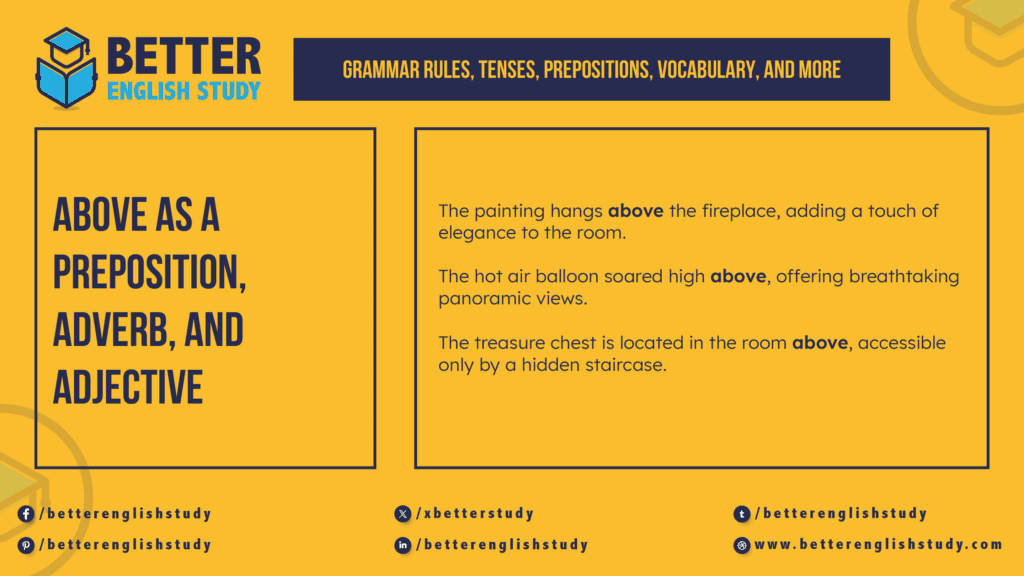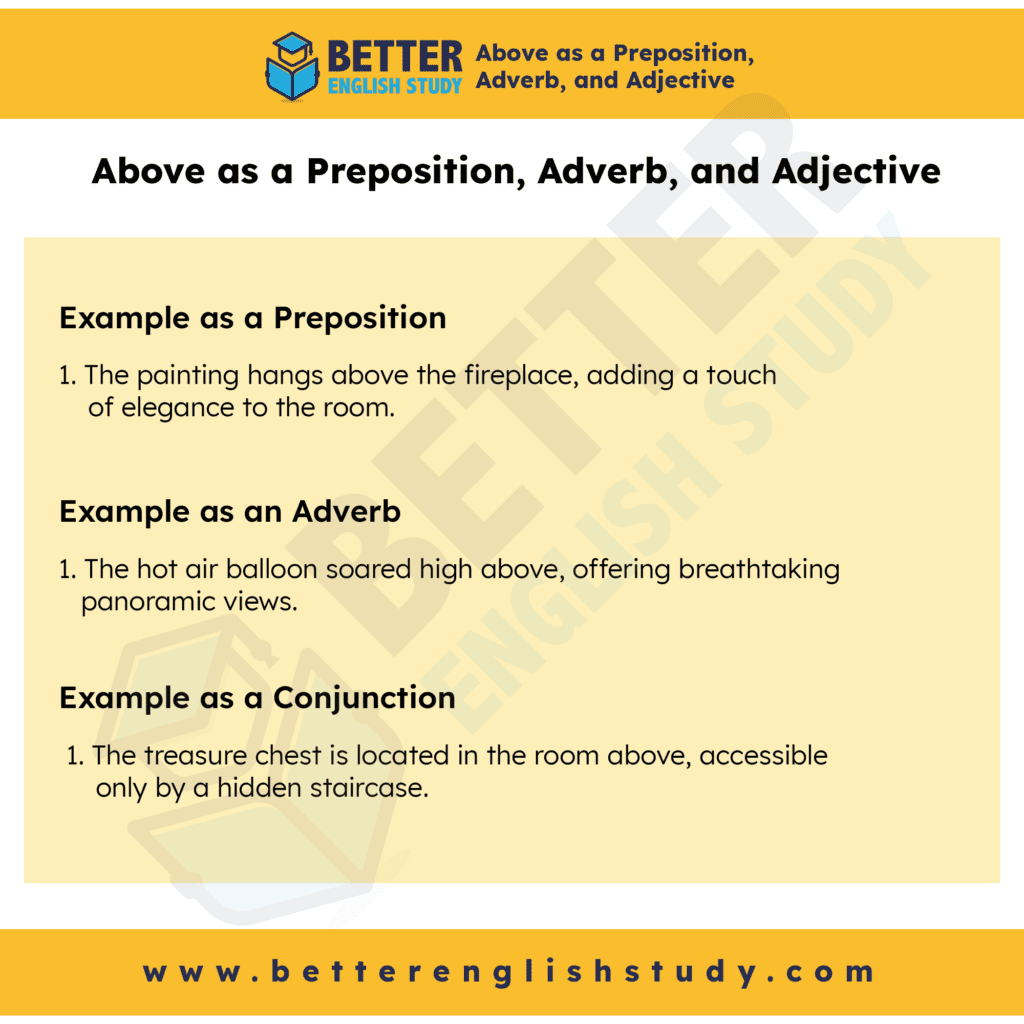
With its ever-evolving nature, language invites exploration into the roles and nuances of words that guide us through the intricacies of expression. “Above” is one such term that often prompts questions about its grammatical identity.
In this exploration, we will unravel the layers of “above” to determine its functions as a preposition, adverb, and adjective.
Is Above a Preposition?
Yes, “above” is a versatile word that can function as a preposition or an adverb. Its ability to convey relationships in spatial contexts makes it a key player in constructing clear and descriptive sentences.
Above or Over
While both “above” and “over” can indicate a position higher than something, they are not always interchangeable.
“Above” typically denotes a position directly over a point or area, emphasizing the vertical distance.
“Over,” on the other hand, often suggests a more general sense of covering or spanning horizontally.
Examples of Above and Over:
- The bird soared above the treetops, enjoying the expansive view.
- The kite floated over the meadow, dancing with the wind.
In the first example, “above” emphasizes the vertical distance of the bird from the treetops, while “over” conveys the kite’s horizontal movement across the meadow.
To Describe a Position Higher Than Something
The primary function of “above” is to describe a position higher than something else. Whether in physical space or metaphorical contexts, “above” provides clarity regarding elevation.
Example Describing Position:
- The stars twinkled above, creating a celestial tapestry in the night sky.
In this instance, “above” specifies the position of the stars higher than the observer, adding a celestial dimension to the description.

Above as a Preposition, Adverb, and Adjective
“Above” showcases its versatility by seamlessly transitioning between preposition, adverb, and adjective roles.
Example as a Preposition:
- The painting hangs above the fireplace, adding a touch of elegance to the room.
In this sentence, “above” functions as a preposition, indicating the position of the painting concerning the fireplace.
Example as an Adverb:
- The hot air balloon soared high above, offering breathtaking panoramic views.
Here, “above” modifies the verb “soared,” providing additional information about the direction of the balloon’s ascent.
Example as an Adjective:
- The treasure chest is located in the room above, accessible only by a hidden staircase.
In this example, “above” acts as an adjective, describing the room’s position in relation to another room.
In conclusion, “above” is a dynamic word that gracefully maneuvers through prepositions, adverbs, and adjectives. Whether describing physical elevation or metaphorical heights, “above” enriches our language with its spatial nuances.
